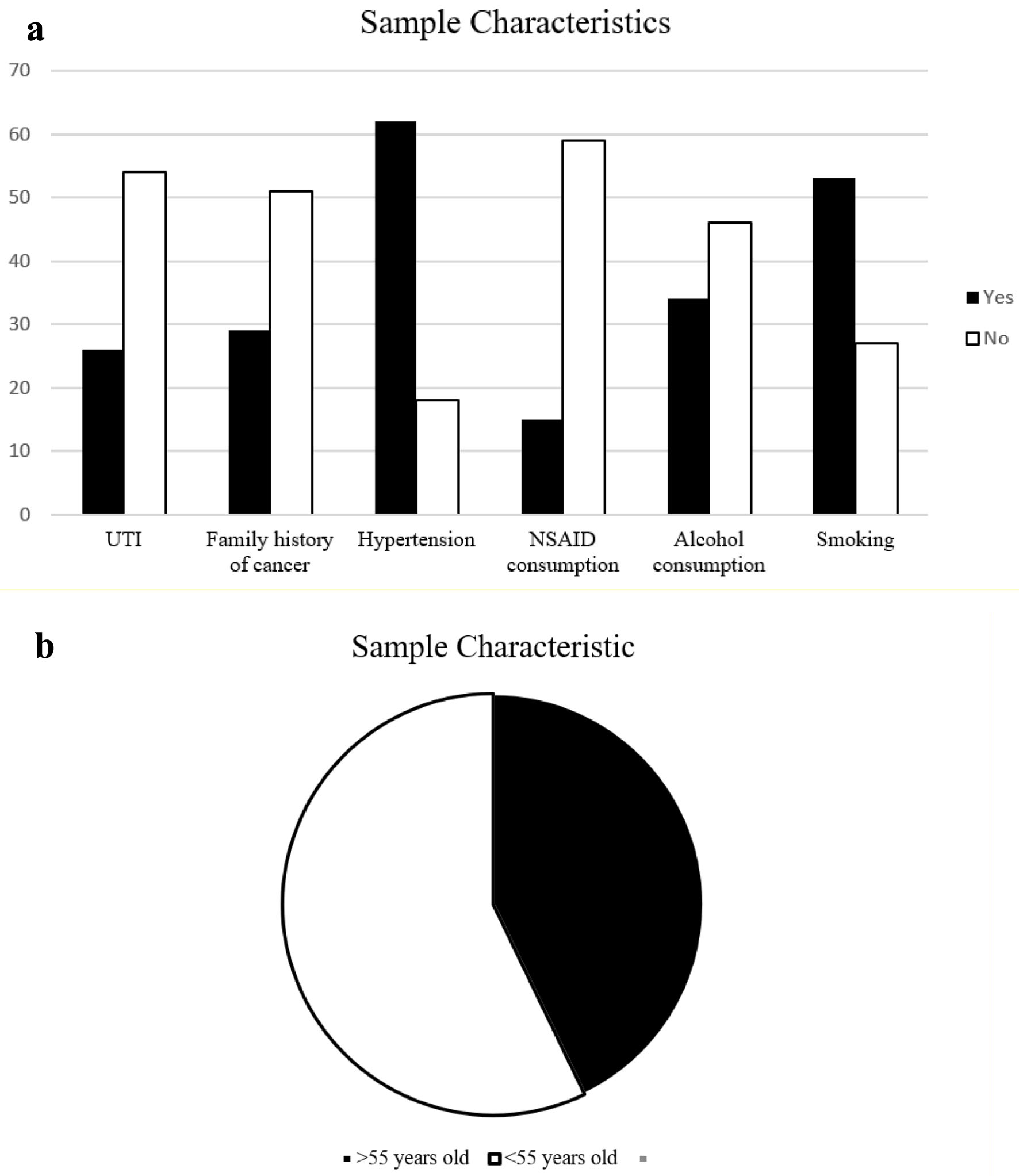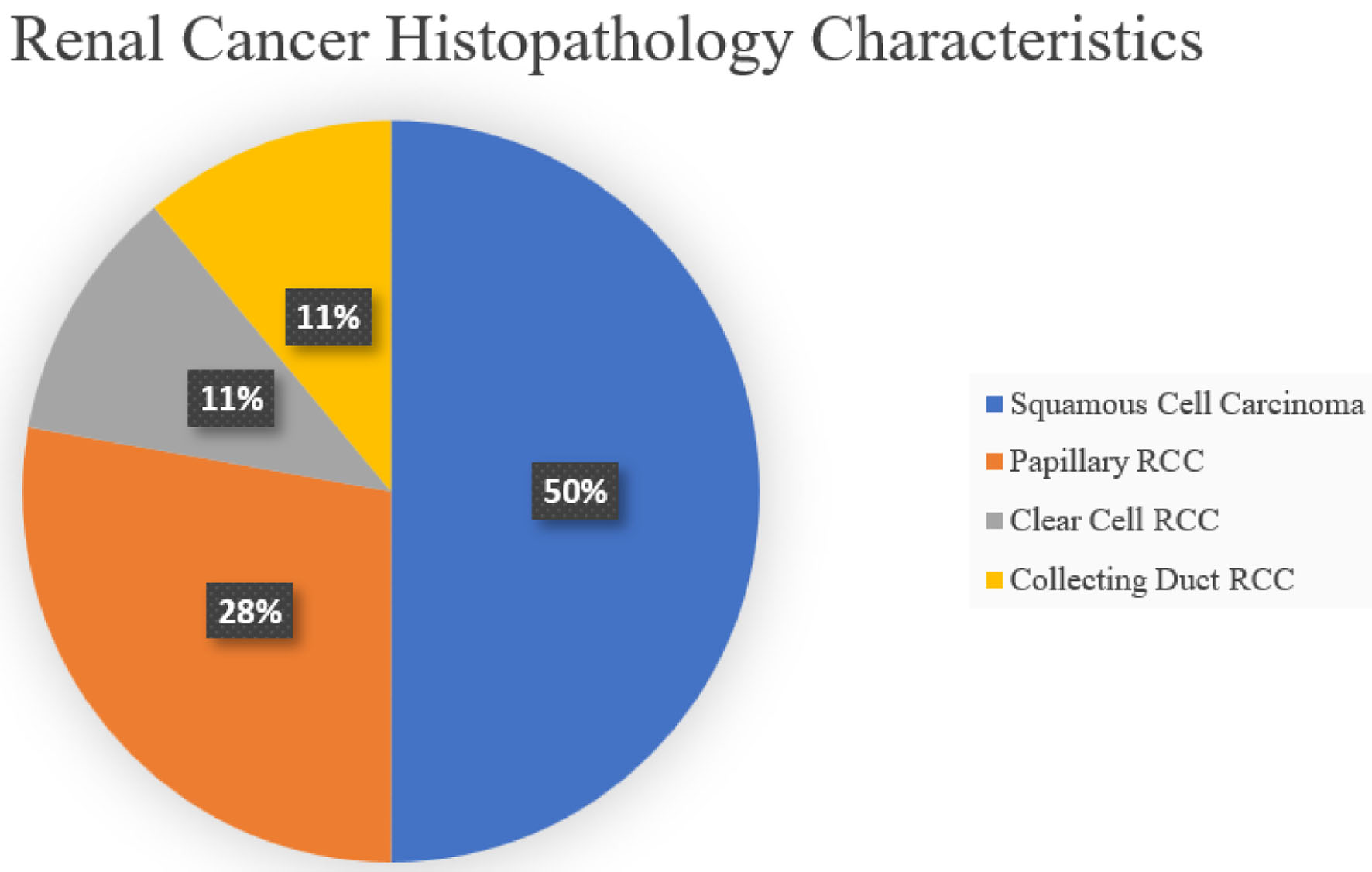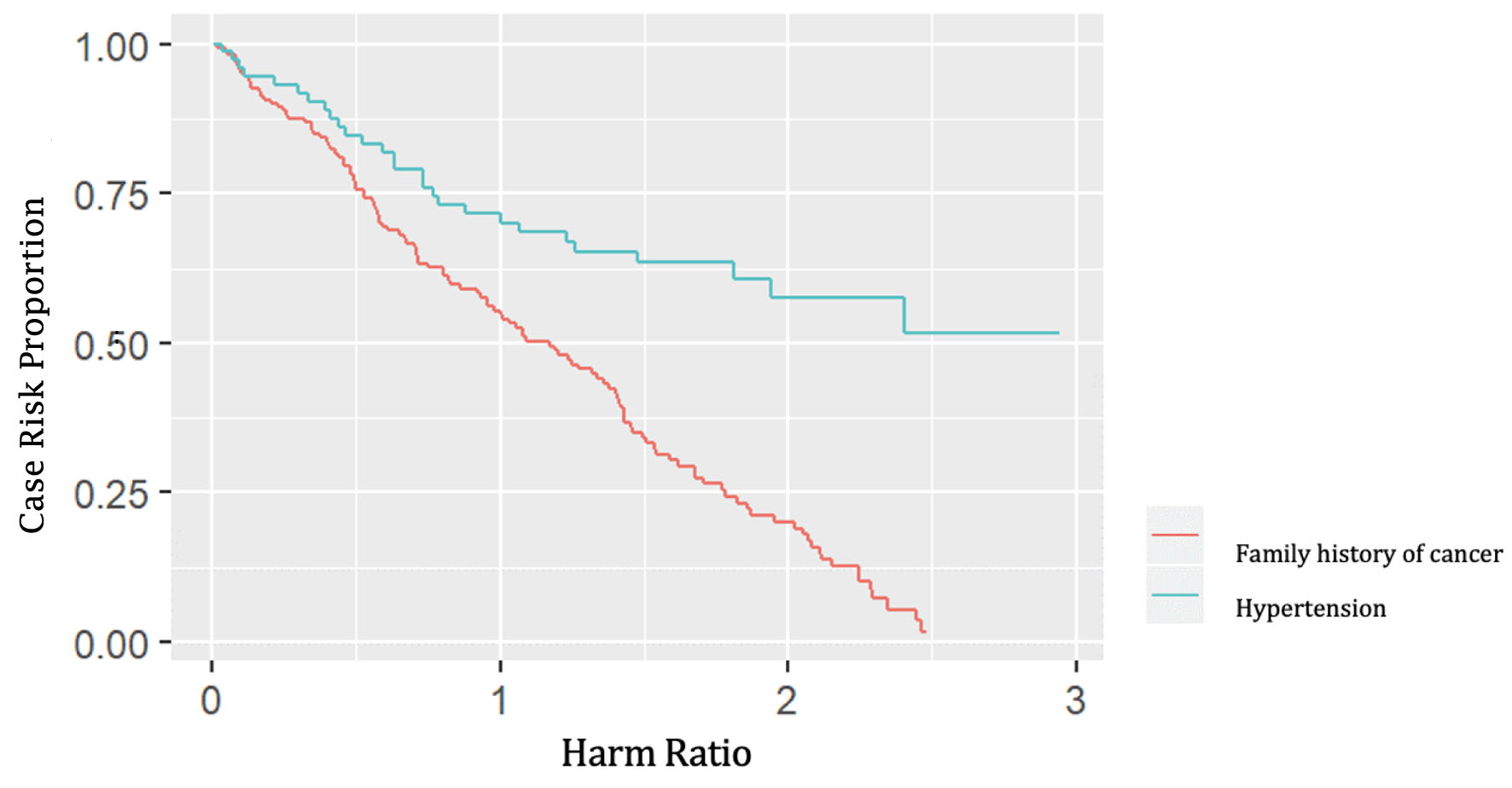
Figure 1. Baseline characteristics of nephrolithiasis patients. (a) Comorbidities: UTI (yes: 26 (32.5%), no: 54 (67.5%)), family history of cancer (yes: 29 (36.3%), no: 51 (63.7%)), hypertension (yes: 62 (77.5%), no: 18 (22.5%)), NSAID consumption (yes: 15 (18.7%), no: 59 (81.3%)), alcohol consumption (yes: 34 (42.5%), no: 46 (57.5%)), and smoking (yes: 53 (66.3%), no: 27 (33.7%)). (b) Age (> 55 years old: 36 (40%), < 55 years old: 48 (60%); mean ± SD: 48.77 ± 7.23). NSAID: nonsteroidal anti-inflammatory drug; SD: standard deviation; UTI: urinary tract infection.

